First, let’s consider the electrical flow through the heart. Below we will explore how electrical flow travels through the heart. This will be imperative to understand all things ECG. In the next article, What is Electrocardiogram, we will cover ECG basics.
The electrical impulse starts at the sinoatrial (SA) node.
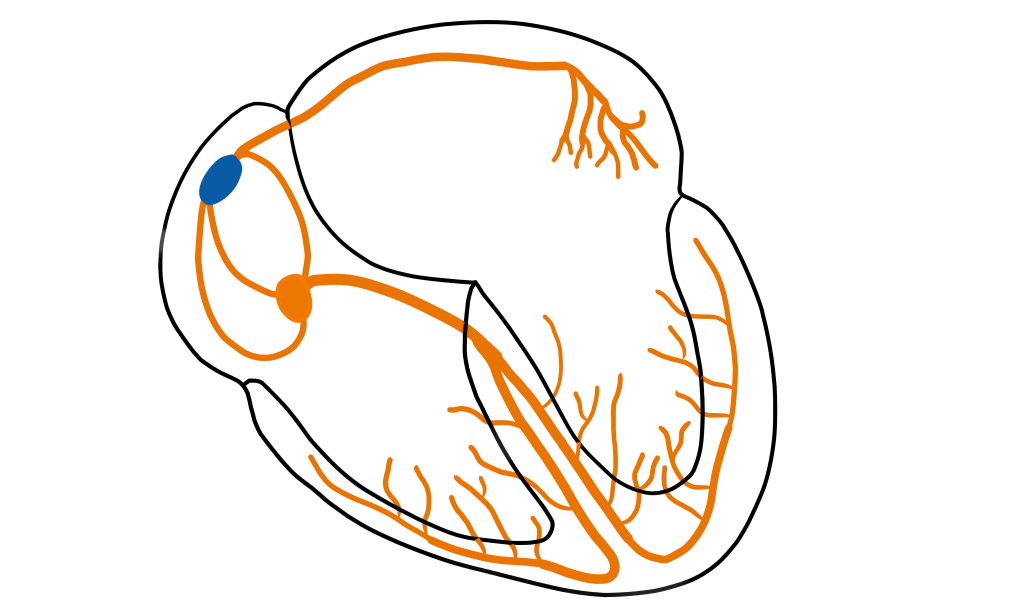
Next, the impulse moves throughout the atria causing the atria to depolarize (contract). The impulse moves so fast it happens almost instantaneously, within 0.06 to 0.12 seconds. This is seen as the P-wave on ECG.
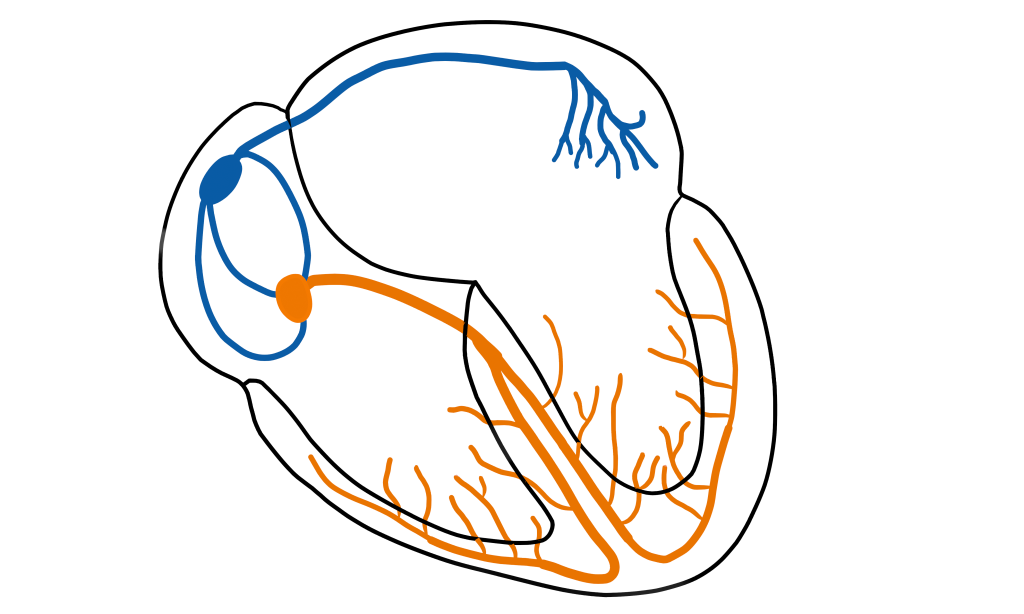
Next the impulse is delayed from moving to the ventricles via the atrioventricular (AV) node, and this delay lasts roughly 0.06 to 0.10 seconds and is known at the PR segment.
What is more commonly measured here is the PR Interval which is measured from the onset of SA conduction to the onset of Ventricular depolarization i.e. the beginning of the P-wave to the start of the QRS. This interval is normally within 0.12 to 0.20 seconds.
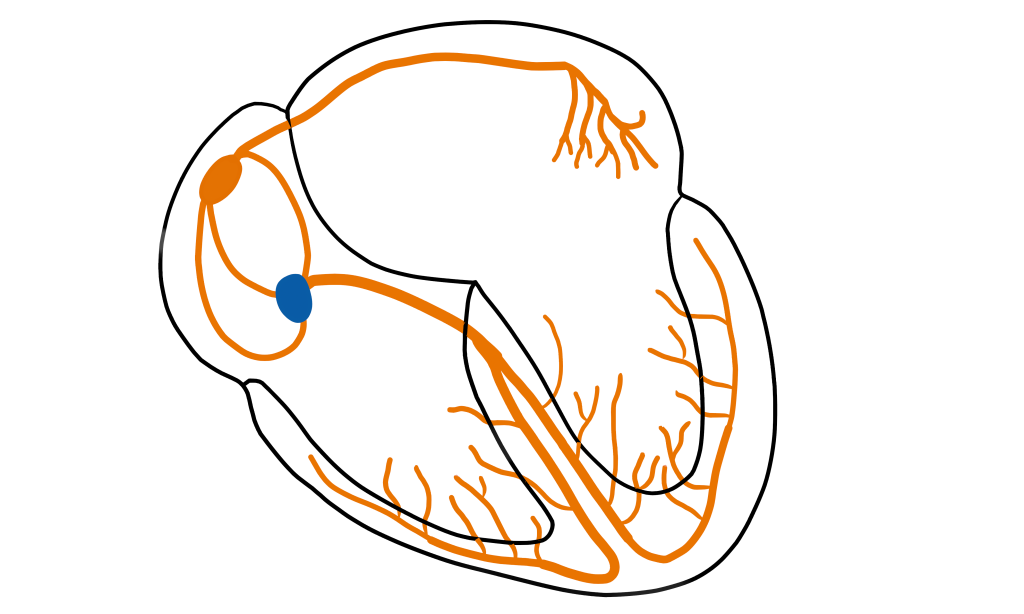
Next, two things happen simultaneously:
- First, The atria repolarize (relax and reset)
- Second, the ventricles depolarize (contract). This is the QRS wave which takes roughly 0.06 to 012 seconds. This will be shown in detail below:
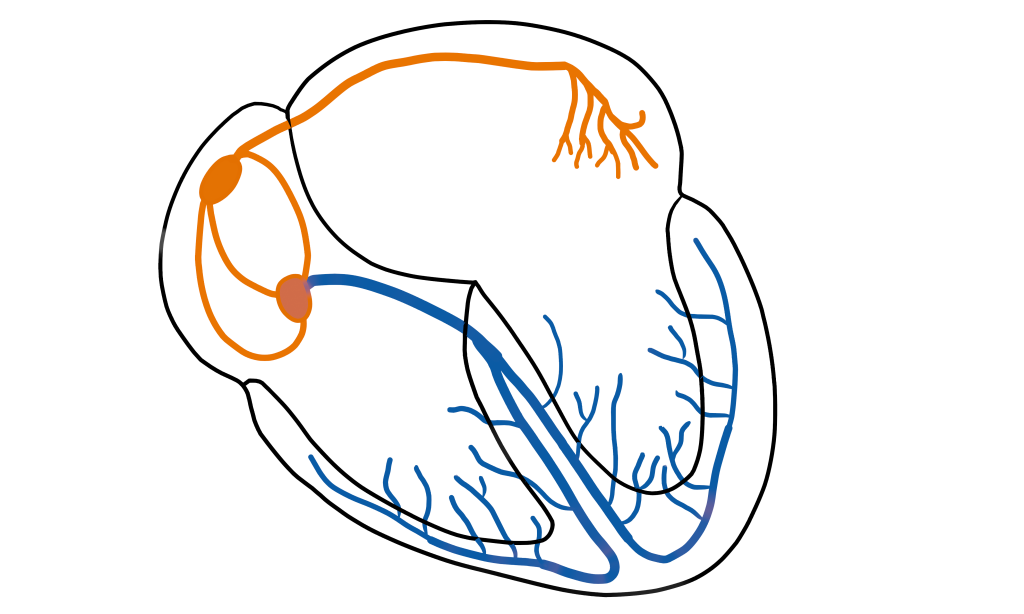
First, the impulse travels from the AV node to the bundle of HIS.
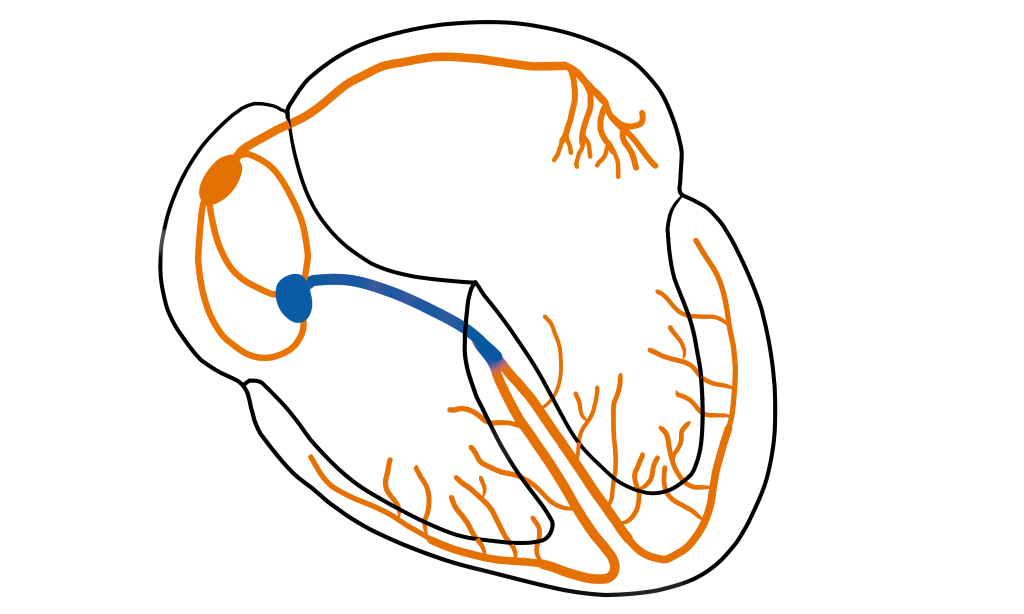
From the bundle of HIS the impulse travels to the left and right bundle branches.
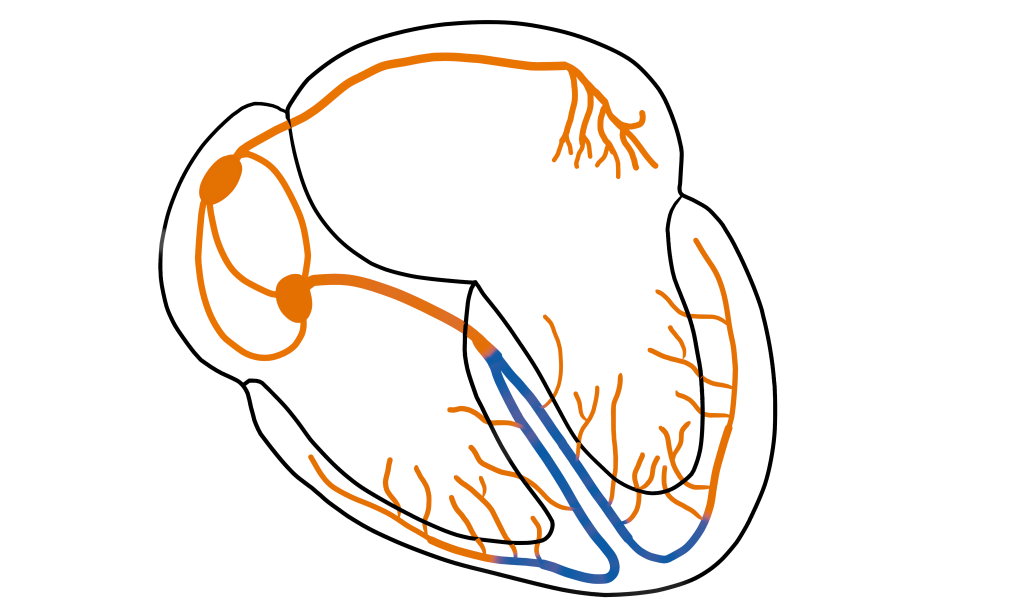
From the bundle branches the impulse moves to the purkinje fibers finalizing the travel through the ventricles causing ventricular contraction.
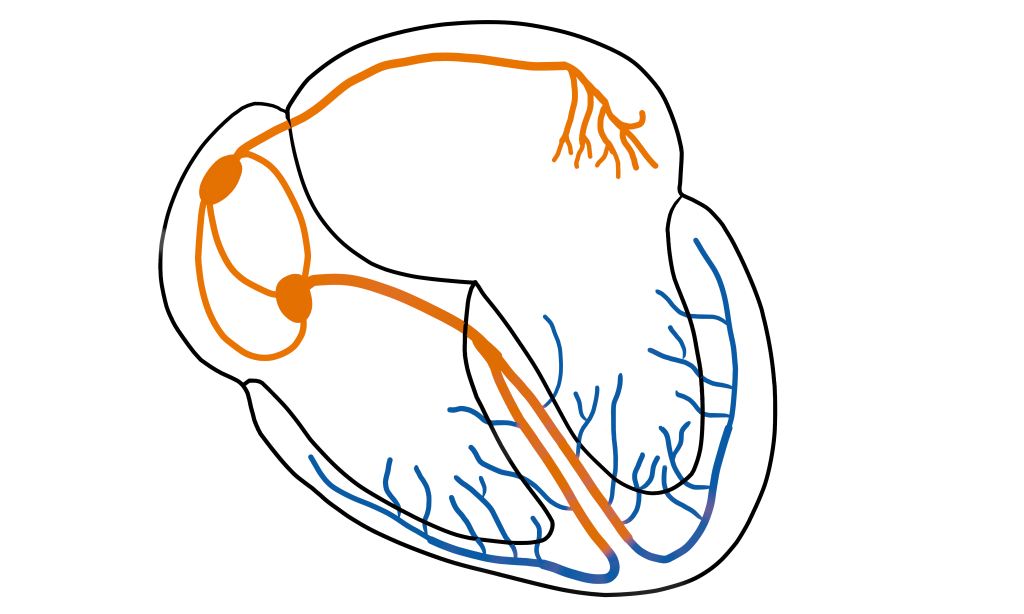
Lastly, the ventricles repolarizes and resets for the next contraction. Ventricular repolarization is seen as the T-wave on ECG.
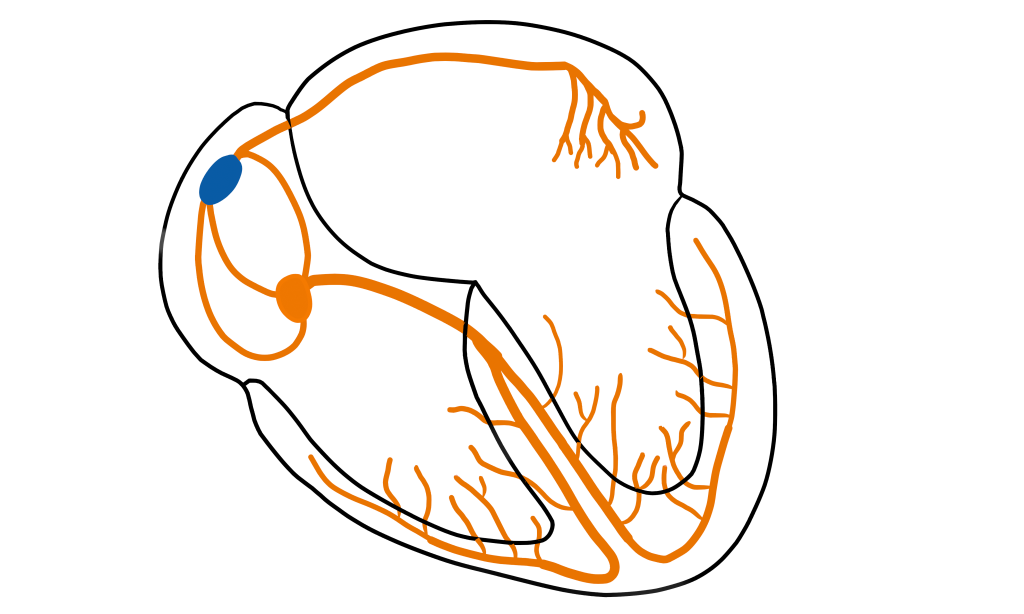
Check out the video below to see this in action:
Read next: What is electrocardiogram
